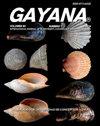来自南大洋极端海洋栖息地的细菌胞外多糖:生产和部分特性
IF 0.2
4区 生物学
Q4 ZOOLOGY
引用次数: 2
摘要
深海微生物在低温、高盐度、高气压等极端生态环境和恶劣环境条件下生存,具有重要的科学意义。南大洋(SO)是深海生态系统的一个例子,生活在这种恶劣环境中的微生物可能产生不同的生物活性次生代谢物。SO(印度部门)在微生物组成和群落动态方面的记录相对较少。本研究从三种强效的SO(印度部门)细菌中分离出外多糖(EPS),优化EPS的生产并对其进行部分表征。三种不同的eps具有不同的结构构象,从多孔到强片状,C/N比在4 ~ 11之间。红外光谱显示了碳水化合物、水分子和蛋白质相关酰胺的不同活性基团的存在。海洋微生物生产的eps具有很高的生物技术应用前景,如制药领域的药物载体、食品加工业的乳化剂和低温保护剂、石化产品的解毒等。本研究分离的三株细菌显示出生产EPS生物聚合物的潜力,其生物技术应用有待进一步探索。本文章由计算机程序翻译,如有差异,请以英文原文为准。
Bacterial exopolysaccharides from extreme marine habitat of Southern Ocean: Production and partial characterization
Deep marine microorganisms survive under extreme ecological settings and harsh environmental conditions of low temperature, high salinity, and high atmospheric pressure making it significant of scientific interest. Southern Ocean (SO) is one such example of deep marine ecosystem and the microorganisms inhabiting in such hostile environment may produce different bioactive secondary metabolites. SO (Indian Sector) is relatively less documented in terms of microbial composition and community dynamics. The present study involves isolation of exopolysaccharides (EPSs) from three potent SO (Indian Sector) bacteria, optimization of the EPS production and partial characterization of them. Three different EPSs show varying structural conformation, that is from porous to strong flakes mimicking polymeric structure with C/N ratio ranging between 4 - 11. FTIR spectra have exhibited the presence of different active groups of carbohydrate moieties, water molecules and protein-associated amides. EPSs produced by marine microorganisms show high biotechnological promises such as drug carrier in pharmaceutical field, emulsifier and cryo-protectant in food-processing industry, detoxification of petrochemical oils and much more. The three bacterial isolates in this study showed potential of producing EPS biopolymer that can be further explored in terms of its proper biotechnological applications.
求助全文
通过发布文献求助,成功后即可免费获取论文全文。
去求助
来源期刊

GAYANA
Agricultural and Biological Sciences-Aquatic Science
CiteScore
0.60
自引率
0.00%
发文量
5
期刊介绍:
GAYANA is a scientific journal published by Universidad de Concepción, Chile. It is the modern version of Gayana Oceanología and Gayana Zoología. Therefore its numeration starts at volume 63(1).
GAYANA covers all aspects of zoology and oceanographic research. It is structured in five sections, defined by subject or discipline: Ecology, Biodiversity and Taxonomy, Earth Sciences, Evolutionary, and Applied Biology and Environmental Biology. Each section is in charge of an editor who receives and manages the manuscripts sent for evaluation in close collaboration with the editorial board.
 求助内容:
求助内容: 应助结果提醒方式:
应助结果提醒方式:


